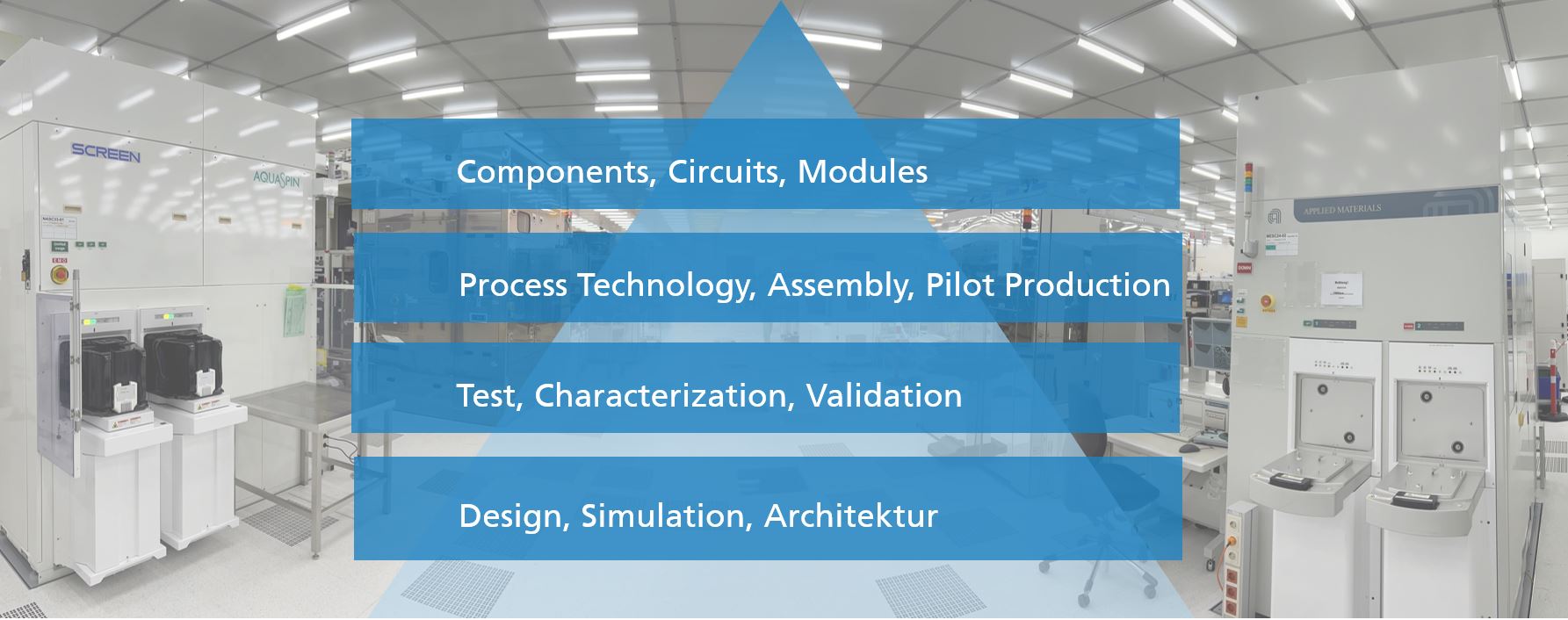Discover the innovative power of the Research Fab Microelectronics Germany – Module Quantum and Neuromorphic Computing (FMD-QNC). We support your developments in the quantum and neuromorphic computing field with a constantly growing range of future-oriented technologies.
Some of our highlights:
Do not hesitate to contact us to discuss your specific requirements. Together we will realize your visions for the computing of the future.
We support research groups, start-ups, and industry in developing hardware for quantum and neuromorphic computing with customized microelectronics, nanoelectronics, and photonics solutions.
Dr. Tim Rom, FMD-QNC
The Research Fab Microelectronics Germany FMD has launched its new extension module FMD-QNC, which supports the development of quantum computing and neuromorphic hardware in Germany and Europe. The consortium consists of 19 institutions, including institutes of the Fraunhofer-Gesellschaft and the Leibniz Association, as well as Forschungszentrum Jülich and AMO GmbH. FMD-QNC offers research groups, start-ups, and industrial companies access to state-of-the-art microelectronic equipment and process know-how.
FMD-QNC supports the development of a wide range of quantum and neuromorphic hardware approaches with customized technologies and processes from various fields, such as nanotechnology, microelectronics, optics, and photonics.
FMD-QNC supports a variety of platform technologies, including:
- Superconducting qubits
- Solid-state spin qubits
- Neutral atoms
- Ion traps
- Photonic platforms
- Analog and neuromorphic computing architectures
- Various memristor technologies

In addition to research and pilot manufacturing capabilities, the service offering includes design, simulation, system integration, testing, and validation to deliver solutions that meet the demanding requirements for scaling up hardware systems and subsequent transfer to the industry.
Technology offerings by application area
Enabling technologies for cryogenic platforms:
- Superconducting materials and their characterization
- Pilot line for superconducting 3-D qubit chips
- Cryogenic wiring and interposer technologies
- Design and testing of cryogenic electronics
- Control systems for cryogenic qubits
- Materials for spin qubits and their characterization
Enabling technologies for atomic and photonic platforms:
- Photonic platforms and integrated waveguide structures
- Hetero- or hybrid PIC, light switching and control, non-linear optical materials
- Selective laser-induced etching (SLE) and packaging
- Addressing units for ions and atom-based quantum computers
- Diode laser-based beam sources and photodetectors
- Macro to micro-optical superstructures
- Optical MEMS and silicon technologies
Further enabling technologies for quantum platforms:
- Nano process technology for quantum technologies and photonics
- Color centers: materials, production, integration
- Scalable assembly and connection technologies
Enabling technologies for neuromorphic computing:
- Neuromorphic pilot lines and new material systems for storage technologies
- Ferroelectric memory technologies for neuromorphic computing
- Conceptual design of hybrid neuromorphic sensor systems in practice
- Design and training of neuromorphic neural networks
- Memristors for safe and high scale neuromorphic systems
- Rapid Full Custom IC Design for the A-nalog De-ep L-earning I-nference A-ccelerator ADeLIA using UniLib Plus
- Neuromorphic hardware architectures and their design
- CMOS integrated memristive devices for in-memory computing
Benefit from our networked cleanroom infrastructure and modern machinery, which offers you technological breadth, top quality, and flexibility. Our joint office coordinates all partners to guarantee optimum solutions for your scientific and industrial requirements.
Do not hesitate to contact us to discuss your specific requirements and help us realize your visions for the computing of the future.






























































